9 Best Native Plants for Your Baton Rouge Landscape
BY JUDITH GALLOVA | APRIL 17TH, 2023 | BATON ROUGE, LAWN CARE, LOUISIANABaton Rouge is a natural wonderland brimming with scenic parks, serene lakes, and bucolic countryside. If you want to replicate that beauty outside your front door, consider incorporating some of the native plants that make Baton Rouge so irresistible in the first place.
Read on to discover the best native plants for Baton Rouge and the benefits they can provide.
In this article:
- Why Use Native Plants
- 9 Best Native Plants for Your Baton Rouge Yard
- Where to Find Native Plants in Baton Rouge
Why Use Native Plants
If you want a great landscape but don’t want to spend endless days caring for it, natives are the obvious choice. They offer a number of benefits:
- They naturally grow in the area, making them easier to maintain than non-natives.
- They attract a variety of birds and pollinators.
- They don’t need as many chemical treatments which pose harm to local ecosystems.
9 Best Native Plants for Your Baton Rouge Yard
1. Hibiscus (Various Types)

Photo Credit: Quartl / Wikimedia Commons / CC BY-SA 3.0
Hibiscus may remind you of a tropical vacation, but it’s actually a Louisiana native, and there are many varieties to choose from. This fabulous shrub or tree comes in various colors and can turn any garden into a vibrant butterfly oasis.
Hibiscus can grow up to 10 feet. If you want to contain it, make sure you prune it in the spring. It grows in medium-to-wet average soil and hot and humid weather. If you want it to thrive, let it get exposed to full sun; just be careful not to let it dry out.
Some types of hibiscus, such as the Rose of Sharon (Hibiscus syriacus), are toxic if consumed, so exercise caution with children and pets.
Plant type: Shrub
Hardiness zones: 5-9
Sun: Full sun to partial shade
Water needs: High
Soil: Average, clay, moist, well-draining
Duration: Perennial
Mature height: 7 to 10 feet; Dwarf varieties grow to an average of 3 feet
Potential hazards: Some types, such as Hibiscus syriacus, are toxic
2. Louisiana Phlox (Phlox Divaricata)
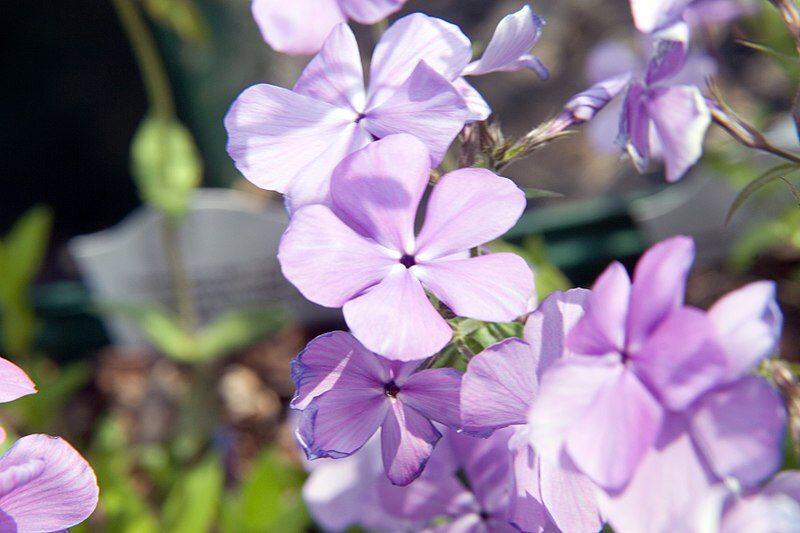
Photo Credit: David J. Stang / Wikimedia Commons / CC BY-SA 4.0
The Louisiana phlox, also known as woodland phlox, blue phlox, and wild sweet William, is a delicate wildflower that likes the shade and is commonly found growing between forest trees. It produces petals in a variety of colors that attract hummingbirds and butterflies. You can plant Louisiana phlox under a tree in your yard if you want to add some color to a shady area.
Rabbits like to munch on the plant’s roots, but this can happen with nearly any plant. You can use repellents to keep them away, although they may not always be effective. If you want to go an extra step to protect your phlox from rabbits, you can use fine-mesh fencing or plant it in a raised flower bed. Additionally, make sure you cut back the plant’s stems after it flowers to protect it from powdery mildew.
Phlox plants are typically not toxic, but little is known specifically about the effects of the Louisiana phlox. As such, it’s best to err on the side of caution.
Plant type: Flower
Hardiness zones: 3 to 8
Sun: Partial shade to full shade
Water needs: Moderate
Soil: Rich, moist, sandy loam, clay loam, slightly acidic
Duration: Perennial
Mature height: 6 to 12 inches
Potential hazards: Lack of data, so be cautious
3. Black-Eyed Susan (Rudbeckia Hirta)
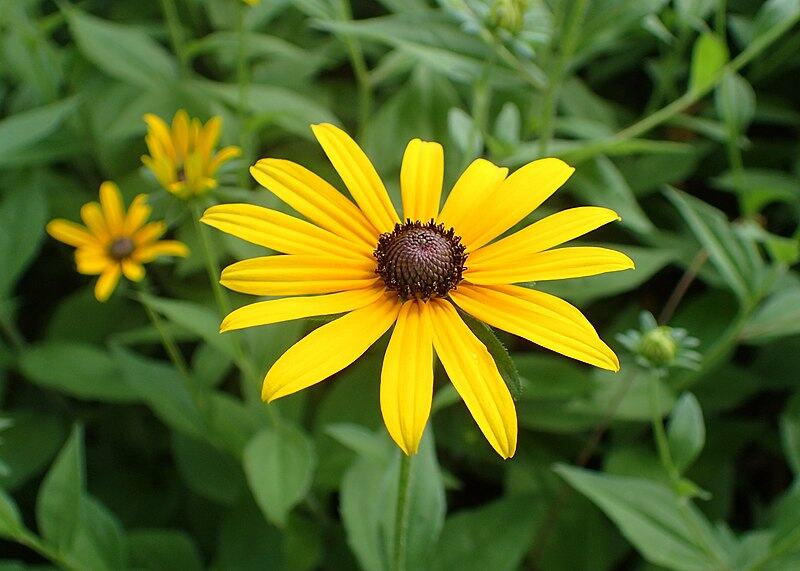
Photo Credit: Krzysztof Ziarnek, Kenraiz / Wikimedia Commons / CC BY-SA 4.0
Black-eyed Susan is a stunning, delicate wildflower. Its bright yellow petals not only look great, but they also attract butterflies.
Although you’ll need to wait around a year to see the first flowers, the wait will be well worth it; once black-eyed Susan blooms, its blossoms last for months. Moreover, the plant is low-maintenance and adaptable; it tolerates heat, drought, and cold. It can also thrive in various planting zones.
This plant is toxic to animals, so keep them a safe distance away. There isn’t much data regarding its toxicity to humans, but it can cause allergic reactions and asthma when touched and consumed, so enjoy it with your eyes only. Gloves and suitable clothing are advisable for handling the plant.
Plant type: Wildflower
Hardiness zones: 3 to 7
Sun: Full sun to partial shade
Water needs: Moderate
Soil: Average, well-draining, acidic
Duration: Perennial
Mature height: 2 to 3 feet
Potential hazards: Toxic
4. Bald Cypress (Taxodium Distichum)
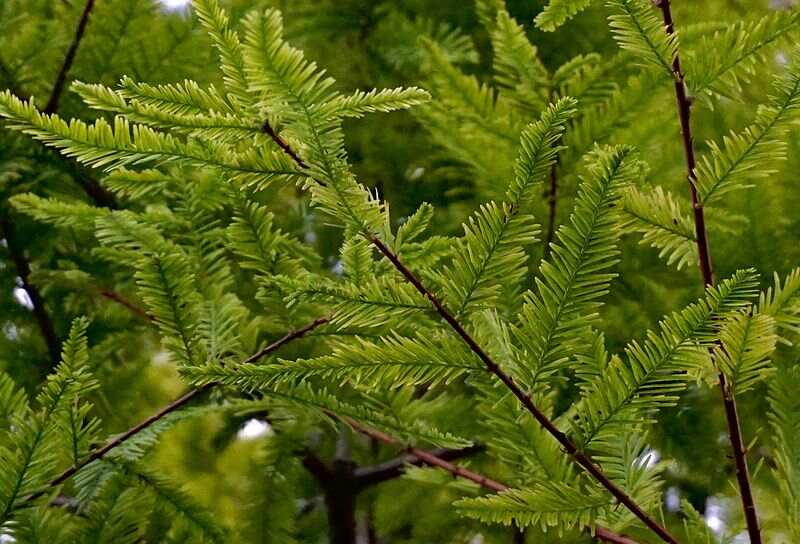
Photo Credit: Treeworld Wholesale / Wikimedia Commons / CC BY 2.0
The bald cypress is the official state tree of Louisiana and can live up to 600 years. It’s also known for its unusual habit of growing “knees” from its roots. Their purpose is unknown, but they’re believed to help the tree breathe in swampy areas. Furthermore, the bald cypress is flood-tolerant. It does best in moist, sandy, and slightly acidic soil, although it can also live in average soil. But if the soil is too alkaline, there’s a risk of chlorosis.
Being yellow-green in summer and orange-brown in the fall, this tree adds nice color to your garden. As a bonus, its seeds provide food for animals like birds and squirrels.
However, there isn’t much known about the bald cypress’s toxicity, and it may be harmful to your pets. As a safety measure, make sure neither you nor your pets consume the plant or its cones.
Hardiness zones: 7 to 11
Sun: Full sun to partial sun
Water needs: Low to moderate
Soil: Average, well-draining
Duration: Perennial
Mature height: 2 to 3 feet; up to 9 feet with flower stalk
Potential hazards: Lack of data regarding toxicity; likely toxic for animals; avoid consuming any part of the plant and keep your animals from consuming it
5. Hawthorn (Crataegus Monogyna)
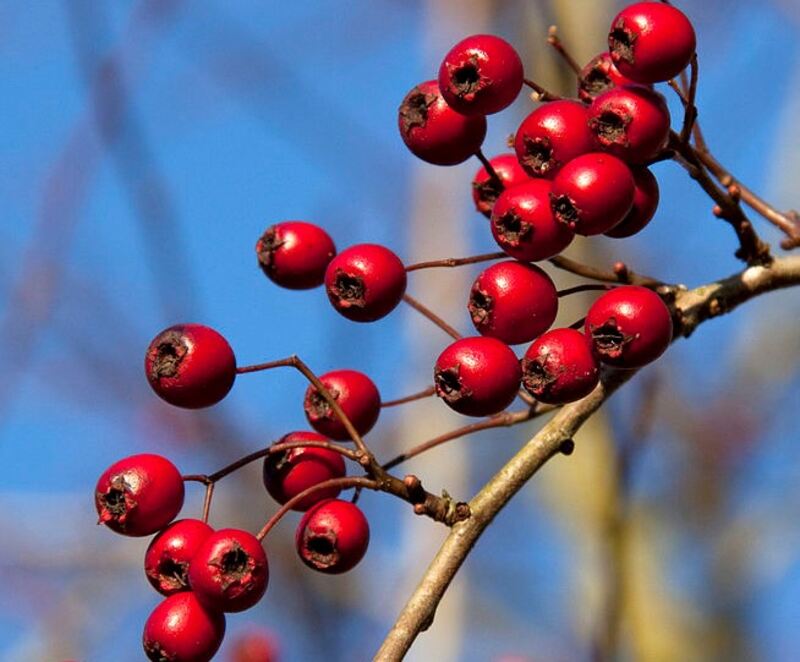
Photo Credit: Tony Hisgett / Wikimedia Commons / CC BY 2.0
Hawthorn is a small, charming tree that begins to blossom and bear fruit in the spring. It’s perfect for creating a shady spot in your yard as well as providing food for pollinators and songbirds. It’s also a fantastic option for a low-maintenance lawn. While hawthorn will thrive in well-drained loam and full sun, it can also grow in a range of soils and in both full sun and partial shade.
As the name suggests, hawthorn has sharp thorns that grow along its branches. There is also a thornless variety, called the Thornless Cockspur Hawthorn, which is native to Northern America.
There isn’t enough data about hawthorn toxicity, but it may be harmful to vulnerable people, including children, pregnant and nursing women, and those with medical conditions. It’s also harmful to vulnerable animals.
Plant type: Tree
Hardiness zones: 5 to 9
Sun: Full sun to partial shade
Water needs: Low
Soil: Well-draining, loam, clay
Duration: Perennial
Mature height: 25 to 30 feet
Potential hazards: Harmful for some people and animals; speak to a professional before consuming
6. Louisiana Iris (Iris Brevicaulis)
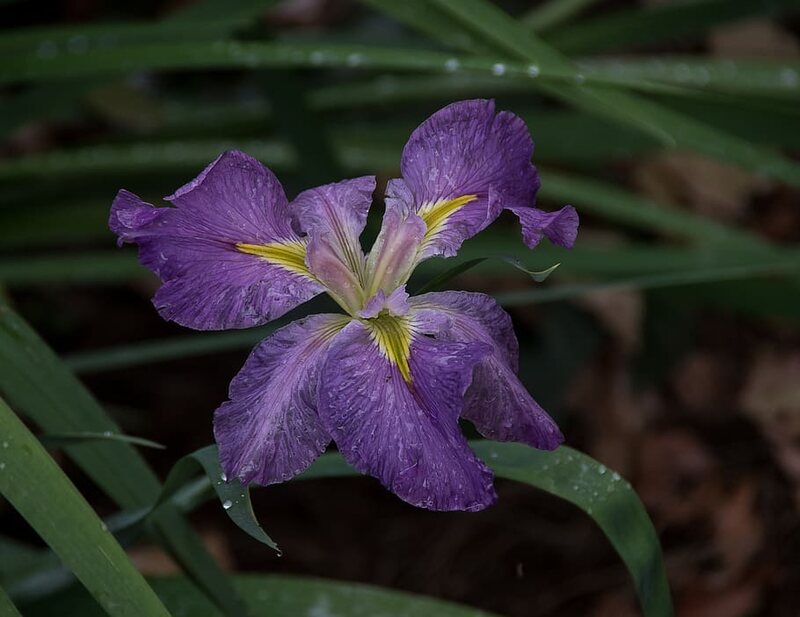
Photo Credit: Pxfuel
The vibrant purple petals of the Louisiana iris used to grow in abundance throughout the state. Sadly, its population has dwindled in recent years because of herbicides, development, and saltwater. But this lovely plant can still make its home in your yard.
Louisiana iris naturally grows in swamps and bogs, so it’s perfect for water features. Although you don’t need to keep the plant constantly soaked in water, you also don’t need to worry about overwatering it. You should lay a 2- to 3-inch layer of mulch to protect your Louisiana iris, because its rhizomes lie close to the soil surface.
Louisiana iris is poisonous and should not be eaten, so exercise caution.
Plant type: Flower
Hardiness zones: 4 to 9
Sun: Full sun
Water needs: High
Soil: Rich, slightly acidic
Duration: Perennial
Mature height: 24 to 36 inches
Potential hazards: Toxic
7. Gulf Coast Yucca (Yucca Louisianensis)
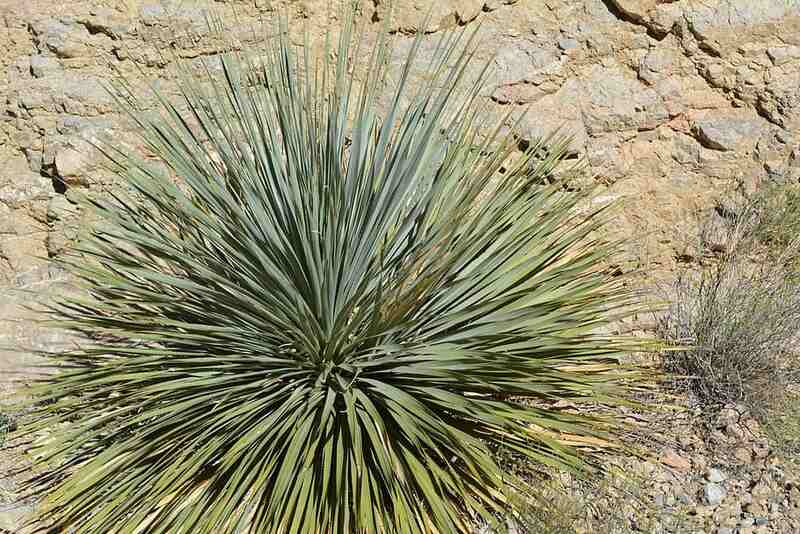
Photo Credit: Pxfuel
Gulf Coast yucca is an evergreen shrub with a bunch of beautiful, summer-blooming flowers surrounded by long leaves. It’s happy in various soil types and either full sun or partial shade. Although the Gulf Coast yucca needs to be watered, it should never sit in water.
Sometimes, yucca plants become infested with yucca plant bugs. These are small, red and black bugs that feed on its juices. Products like neem will make short work of them, though.
Gulf Coast yucca is toxic, and its leaves are sharp, so be cautious. Wear gloves and suitable clothing to protect yourself when you handle the plant.
Plant type: Shrub
Hardiness zones: 7 to 11
Sun: Full sun to partial sun
Water needs: Low to moderate
Soil: Average, well-draining
Duration: Perennial
Mature height: 2 to 3 feet; up to 9 feet with flower stalk
Potential hazards: Toxic
8. Crossvine (Bignonia Capreolata)
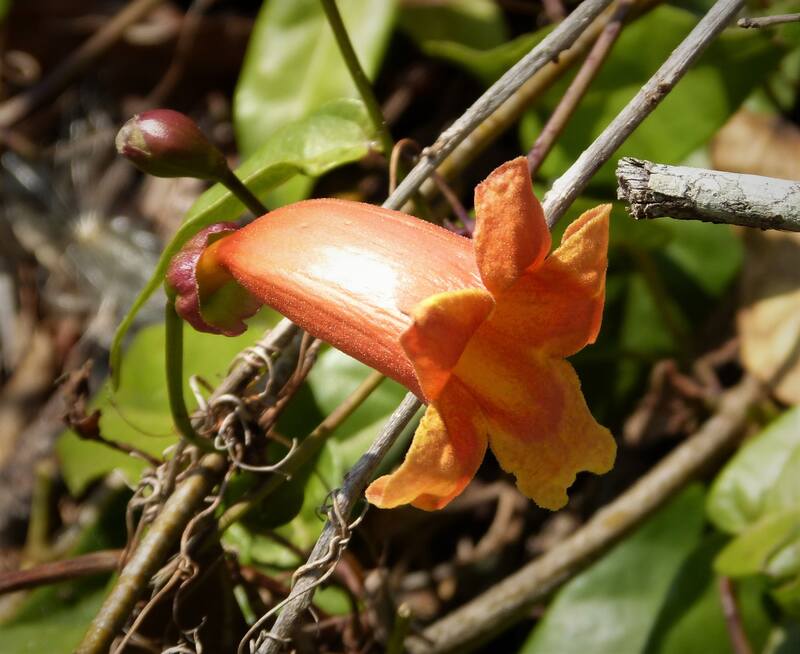
Photo Credit: gailhampshire / Wikimedia Commons / CC BY-SA 3.0
Crossvine, also known as the trumpet flower, is an evergreen vine with lovely, yellow-orange blossoms produced in clusters of two to five. It’s also a favorite of the ruby-throated hummingbird.
Although the plant is tolerant to a variety of soil types, it grows best in soil that’s rich in organic matter. Six hours of daily sunlight can help to ensure that your crossvine will thrive. A little shade is fine, but expect to see fewer flowers. Moreover, crossvine has a tendency to spread too much, so be sure to contain it.
Take note that crossvine is a toxic plant, so you’ll need to practice caution.
Hardiness zones: 7 to 11
Sun: Full sun to partial sun
Water needs: Low to moderate
Soil: Average, well-draining
Duration: Perennial
Mature height: 2 to 3 feet; up to 9 feet with flower stalk
Potential hazards: Toxic
9. Azalea (Rhododendron)
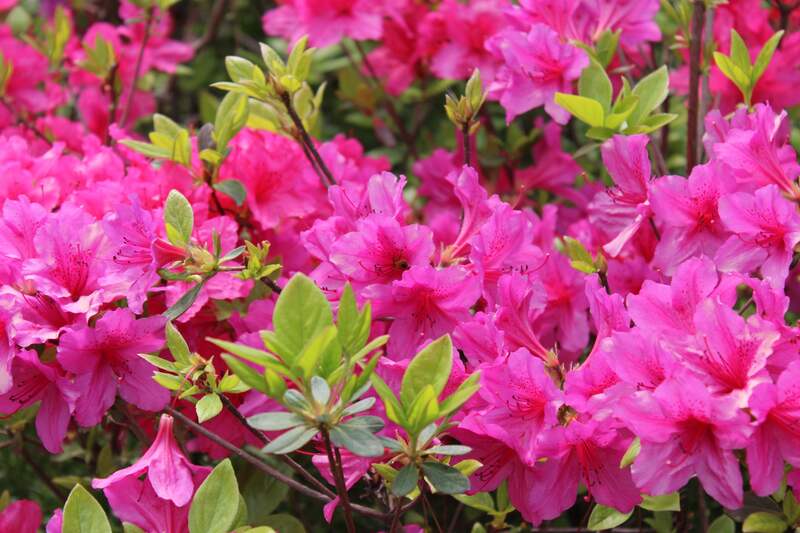
Photo Credit: Pxfuel
Azalea is a vibrant flowering plant that can make a great addition to your Baton Rouge lawn. Its gorgeous blossoms come in a range of colors that last from February to May. They also attract butterflies and hummingbirds.
The plant needs regular watering in warm weather, but too much moisture or sun is unsuitable for it. You can improve your soil drainage by topdressing with compost and sand. A filtered canopy from your garden trees can work well to protect your azalea plants.
But be sure to practice caution, because azalea is toxic.
Plant type: Shrub
Hardiness zones: 5 to 9
Sun: Partial shade
Water needs: Low
Soil: Well-draining, acidic (4.5-6.0 pH)
Duration: Perennial
Mature height: 4 to 6 feet
Potential hazards: Toxic
How to Choose the Best Baton Rouge Natives for Your Landscape
This is just a small sample of the plants that are native to Baton Rouge. When you look for the right plants for your landscape, make sure you consider everything from their appearance to their maintenance needs and potential hazards.
As you’ve read above, some plants carry more hazards than others. But take note that just because a plant doesn’t have known hazards doesn’t mean it’s risk-free. If you have pets, you shouldn’t let them consume any of the plants in your yard unless you’re sure they’re pet-safe (or, specifically, dog-safe, if you’re a dog owner). You should consult a medical professional if you’re unsure about the effects of a plant or its fruit.
One more thing to consider is Baton Rouge’s hardiness zone. Baton Rouge has a hardiness zone of 8b and 9a, meaning that its lowest temperatures range between 15 and 25 degrees Fahrenheit depending on the area. We’ve included the hardiness zone of each plant in the descriptions above, so you can check your area’s hardiness zone and make sure it’s a match for the plant you want.
Where to Find Native Plants in Baton Rouge
You might see beautiful native plant species in the wild. But if you do, make sure you only appreciate them with your eyes; don’t try to dig them up or take them home with you. Taking native plants directly from the wild can be harmful to ecosystems.
Instead, you can find native plants for sale at local nurseries, such as:
- Beavers Abundance Native Plant Nursery
- Clegg’s Nursery Siegen Lane (+1 225-292-9153)
- Clegg’s Nursery Donmoor (+1 225-927-1419)
- D’s Garden Center
Final Thoughts
There’s a lot that goes into picking the right native plants for your lawn, but it doesn’t end there. You should also learn about the best grass types for Baton Rouge and how to best care for your lawn each season.
If you want to make things easier for yourself, there are various techniques that will take some of the time and effort out of maintaining your yard. Some examples of those are xeriscaping, adding hardscapes, or including potted plants. Does it still sound like a lot of work? Don’t worry. There are many professional lawn care services available that can help you achieve a picturesque yard.
Main Image Credit: Melissa McMasters / Flickr / CC BY 2.0